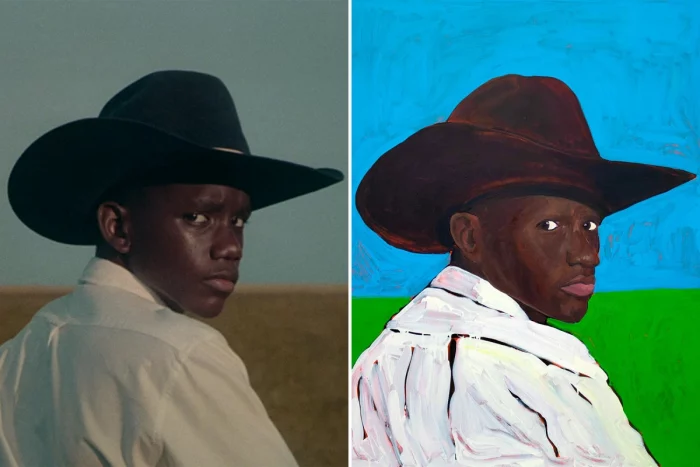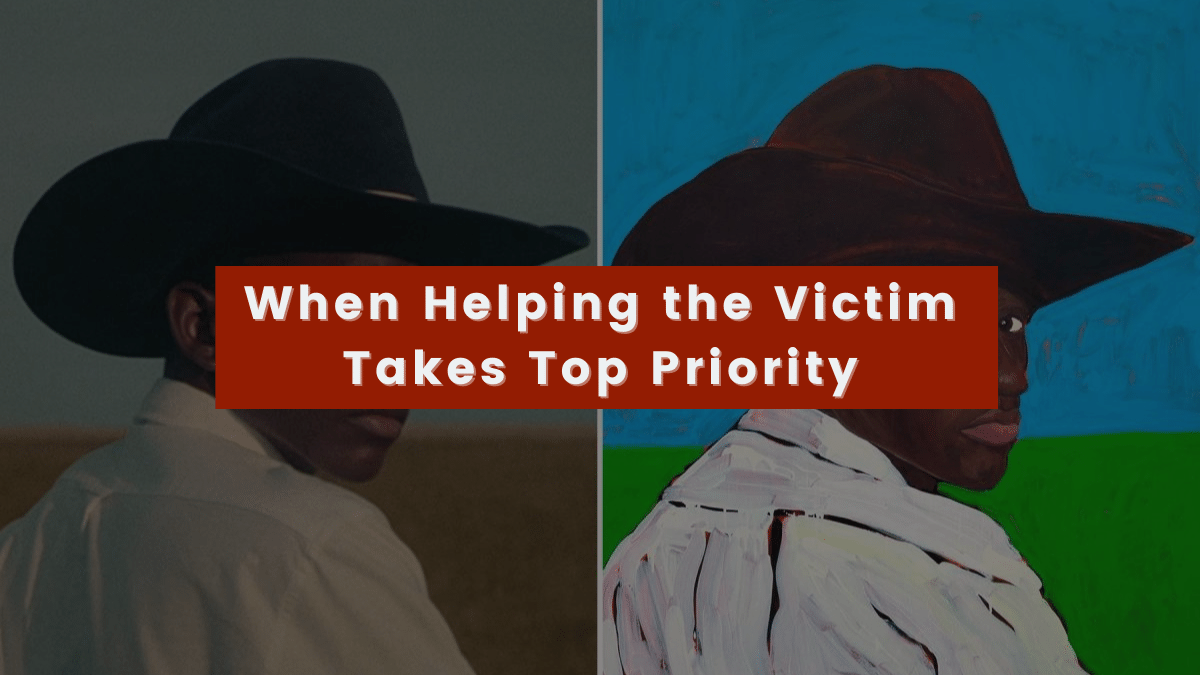A Different Kind of Plagiarism Resolution
Last week, a plagiarism scandal rocked the Guggenheim Bilbao and their Basque Artist Program.
The original allegations were published by Hannah Swayze, a producer who worked on the short film Blue by artist dayday. According to the claims, the Spanish artist Gala Knörr used the film as inspiration for her painting entitled Young Cowboy Gazing.
Specifically, Swayze claimed that the opening shot of Blue was the clear inspiration for Knörr’s piece and that the similarities between the two were unmistakable.

Knörr, for her part, did not deny the allegations. She apologized for the lack of attribution, saying that she made “a very huge mistake” and that it was “not ill intentioned whatsoever.” She further acknowledged that Blue was the inspiration for her work and that she regretted not being upfront about it earlier.
However, this left the Guggenheim Bilbao in a difficult position. How should they respond to these allegations? Normally, in such situations, the gallery would either leave the piece up, but acknowledge the issue and condemn the plagiarism in statements, or simply remove the work and, most likely, blacklist the artist.
But the Guggenheim Bilbao chose a different route. Rather than removing the painting or even trying to sweep the matter under the rug, the gallery is now showing the film alongside the painting that sparked the controversy. This means visitors to the gallery have the chance to enjoy both the painting and the work that inspired it.
This approach was decided by the Guggenheim Bilbao in collaboration with both Knörr and dayday. They describe it as a “reparative solution”, which is a very apt way to describe what this approach is.
Hopefully, this can provide guidance on how other cases can be handled in the future, as it’s an approach that doesn’t focus on tearing the plagiarist down, but on helping the victim back up.
The Oft-Forgotten Victim
As I learned first hand when the Jumi Bello case broke, being a plagiarism victim can be a very lonely thing, even if it’s a fairly large story.
When plagiarism stories break, it’s the plagiarist that gets the lion’s share of the attention. The focus, both publicly and privately, is about what to do with the plagiarist, not how to help the victim.
Truth be told, that is not always inappropriate. There are times in when the focus needs to be on reducing the future harm a plagiarist can do. This is especially true with serial plagiarists.
But it’s also worth asking a simple question: Why is plagiarism wrong?
One of the key reasons is because the lack of attribution and citation means that the original creators are not getting the attention they deserve. For example, if you’re a novelist, having a movie made from your book can be a great way to get additional attention on your book. However, if the filmmaker plagiarizes your work rather than handling it ethically, that attention may never come.
In this case, we have a painting based upon a film and the artist never acknowledged the inspiration, even in their artist statement. This could have been a huge boon for the film, being featured as the inspiration of a work in the Guggenheim Bilbao could have exposed the film to a massive new audience. However, without that citation, it would never have been the case.
What the Guggenheim Bilbao did was essentially correct that injustice. By featuring Blue alongside the painting, it not only puts the painting in an appropriate context, but it corrects the slight the film received.
This is the type of solution that one comes up with when they put less focus on punishing the plagiarist and more focus on actually correcting the wrongs of plagiarism.
While it’s not an approach that could be, or should be, used in every case of plagiarism, it was appropriate here. To my knowledge, this is Knörr’s first run in with plagiarism allegations, and she has both acknowledged the role the film played in her work and apologized sincerely for it for not citing it as such.
As such, it doesn’t make a great deal of sense to push for a heavy-handed punishment of Knörr and that opens up the door to instead help dayday. That, to my mind, is an excellent way to resolve this case, where the victim turns into one of the key winners.
Bottom Line
None of this is to say that Knörr should be let off the hook completely. Though it’s difficult to say who should do it, it would be worthwhile to investigate her past works and make sure that this is the only time something like this has happened.
However, such investigations are incredibly difficult when dealing with visual art. In this case, for example, it took a producer familiar with the film to point out the similarities. That is typically how such artist plagiarism allegations are launched.
To that end, it isn’t exactly as if Knörr is escaping unpunished. This is a moment that will, rightly or wrongly, define part of her career. These types of instances, especially when they become mainstream media stories, don’t get forgotten quickly.
To be clear, she handled it about as well as any accused plagiarist could, and the solution that the parties involved came up with is great. However, there will always be numerous results in Google for her name with the word “plagiarism”.
If there are other plagiarisms in her past or new ones in her future, then she absolutely should be held accountable. However, in this case, it’s nice to see less focus on punishing a plagiarist and more on helping the victim.
That’s something that, when the opportunity arises, more should seek to do in these cases.
Want to Reuse or Republish this Content?
If you want to feature this article in your site, classroom or elsewhere, just let us know! We usually grant permission within 24 hours.
